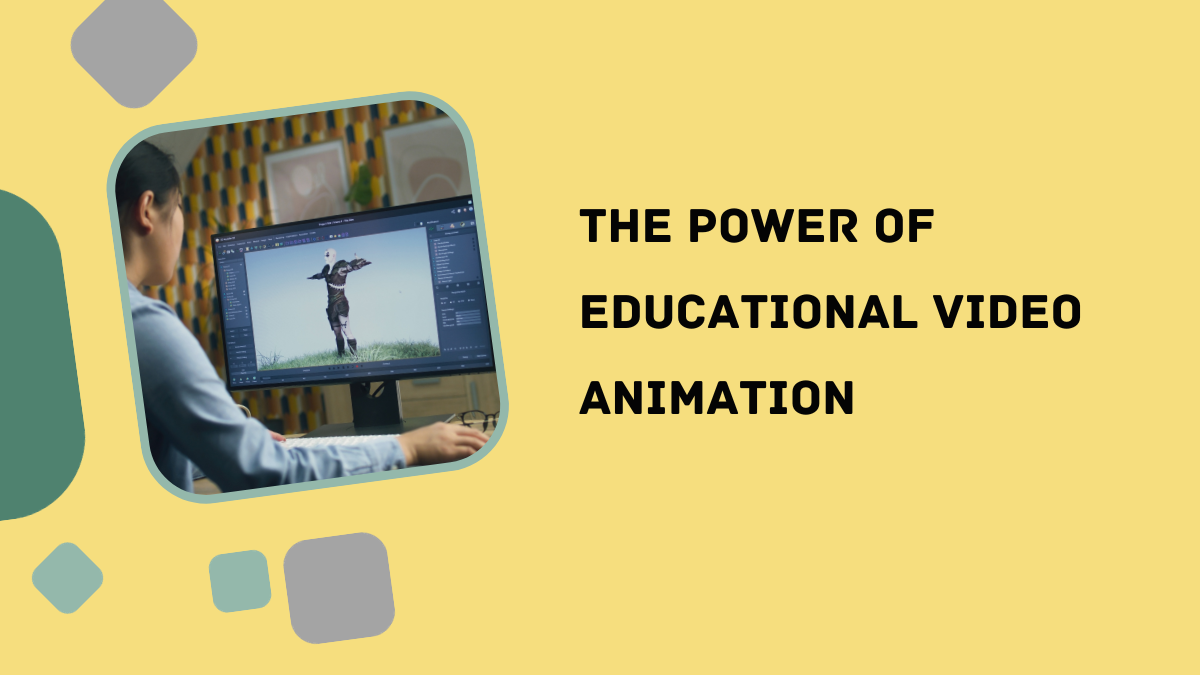
The Power of Educational Video Animation
Are you tired of the same old boring lectures and textbooks? Do you find it challenging to stay engaged during class or while studying? Well, we have some exciting news for you! Educational video animation is revolutionizing the way we learn, making education more captivating and interactive than ever before.
In this blog post, we will explore the incredible power of educational video animation and how it can transform your learning experience. Get ready to be amazed as we dive into a world where complex concepts come to life through vibrant visuals and engaging storytelling. So, buckle up and prepare to embark on an enlightening journey into educational video animation!
Understanding how visuals aid in learning
Visuals have been used in education for centuries, with the earliest known examples being cave paintings and hieroglyphics. However, it wasn’t until the 20th century that the use of visuals in learning truly began to take off. With the rise of technology and digital media, educators now have access to various visual aids such as videos, animations, infographics, and more.
One of the most effective forms of visual aid in learning is educational video animation. This powerful tool combines elements of storytelling, graphics, and motion to create engaging and informative content that can significantly enhance the learning experience.
So, how exactly do visuals aid in learning? Let’s explore some key reasons why animated videos are so effective in helping students understand complex concepts and retain information:
One of the biggest challenges in education is breaking down complex ideas and presenting them in a way that is easy for students to understand. This is where animated videos excel – using simple yet creative imagery along with narration or text overlays; they can explain even the most abstract concepts in a way that makes sense to learners.
The science behind visual learning and retention
Visual learning and retention is a highly effective method of learning that involves the use of visual aids to promote understanding and long-term memory retention. This method has gained popularity recently due to its ability to engage learners and enhance their overall learning experience.
But what exactly is the science behind visual learning and retention? How does it work, and why is it such an effective tool for education? In this section, we will delve into the research and theories behind this powerful approach to learning.
The human brain processes visual information differently than text or verbal communication. According to a study conducted by 3M Corporation, the brain processes visuals 60,000 times faster than text. This means that when we see a picture or watch an educational video animation, our brains can comprehend and retain information more quickly than reading or listening alone.
Benefits of using video animations for education
Video animations have become an increasingly popular tool in education, and for good reason. These engaging and interactive visual aids have proven effective in enhancing the learning experience for students of all ages. In this section, we will explore the various benefits of using video animations for education.
- Simplifies Complex Concepts
One of the significant benefits of using video animations in education is their ability to simplify complex concepts. Animated videos break down complicated information into bite-sized and easy-to-understand chunks, making it easier for students to grasp complex topics. This is especially helpful for subjects that involve abstract or theoretical concepts, such as math or science.
- 2. Enhances Visual Learning
It is a well-known fact that different individuals have different learning styles, with some being more visual learners than others. Video animations cater to these visual learners by providing a more engaging and interactive way of understanding information. The use of colors, images, and motion in animated videos helps to capture students’ attention and make the learning process more enjoyable.
Tips for creating effective educational video animations
Effective educational video animations can be a powerful tool for engaging students and enhancing their understanding of complex concepts. However, making these videos requires careful planning and execution to ensure they are impactful and effective in achieving their intended purpose. In this section, we will discuss some tips for creating successful educational video animations.
- Start with a clear objective – Before starting the animation process, it is crucial to have a clear understanding of the objective you want to achieve with your video. This could be anything from explaining a particular concept or process to engaging students in an interactive learning experience. Having a well-defined goal will help guide your entire animation creation process.
- Know your audience – Understanding your target audience is essential when creating educational content, including animated videos. Consider factors such as age range, education level, and learning styles of your audience before designing the animation. This will help you tailor your content and visuals accordingly, making it more relatable and engaging for the students.
Tools and resources for creating your video animations
Creating your video animations can seem daunting, mainly if you have limited experience in animation. However, with the right tools and resources, it can be a fun and engaging way to enhance your educational videos. In this section, we will explore various tools and resources that can help you create professional-looking video animations.
- Animation Software – The first step in creating a video animation is choosing the right software. There are many options available in the market, both free and paid, each with its unique features and capabilities. Some popular animation software include Adobe Animate CC, Toon Boom Harmony, and Moho Pro. This software offers various tools for creating different animation styles, such as 2D or 3D.
- Online Animation Tools – For those who don’t want to invest in expensive software or are new to animation, several online tools make it easy to create basic animations without prior experience. Powtoon, Vyond (formerly GoAnimate), and Animaker are some popular online animation platforms that offer pre-made templates and drag-and-drop interfaces for creating simple yet effective animated videos.
Addressing potential challenges and limitations
Video animation has become increasingly popular in education as a powerful tool for engaging students and enhancing their learning experience.
However, like any other teaching method, some specific challenges and limitations come with using video animation in education. In this section, we will address some of these potential challenges and provide suggestions for overcoming them.
- Limited Interactivity – One of the main drawbacks of video animation in education is its little interactivity compared to traditional classroom discussions or hands-on activities. While videos can be engaging and visually appealing, they do not provide students with the opportunity to participate or engage with the content actively. This lack of interactivity can lead to disengagement and reduced retention of information.
To address this challenge, educators can incorporate interactive elements within their video animations, such as quizzes or questions that prompt students to reflect on their learning. Additionally, teachers can also follow up with group discussions or activities related to the video content to encourage active participation and reinforce learning.
- Accessibility – Another potential limitation of using video animation in education is accessibility issues for students with visual or hearing impairments. Traditional videos often rely heavily on visual cues and audio narration, which may not be accessible to all learners.





